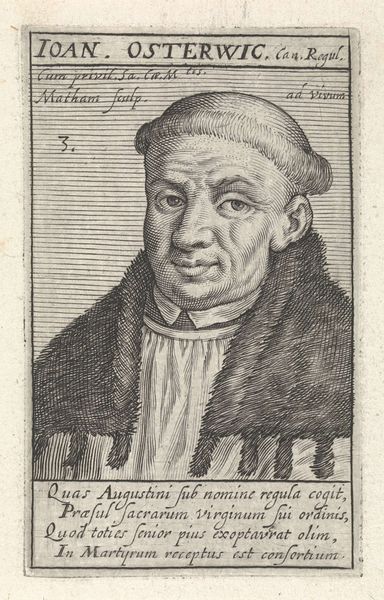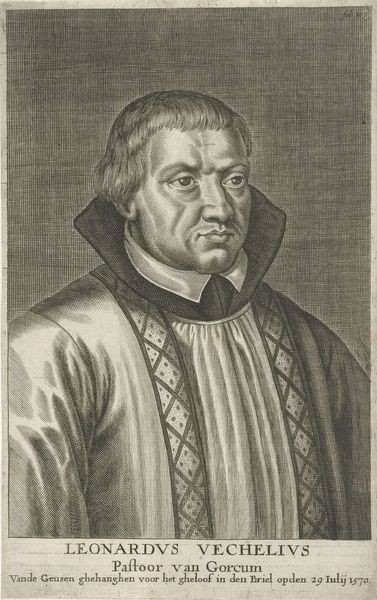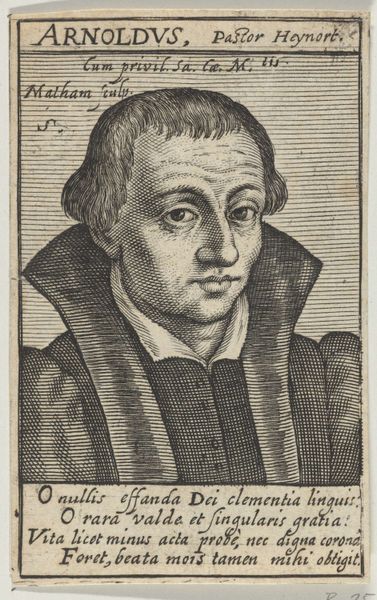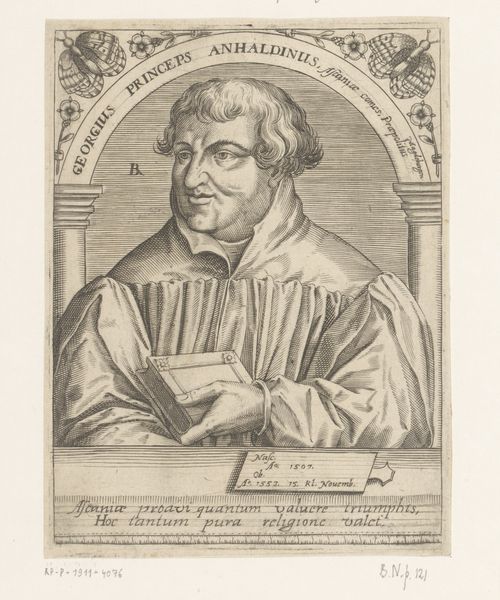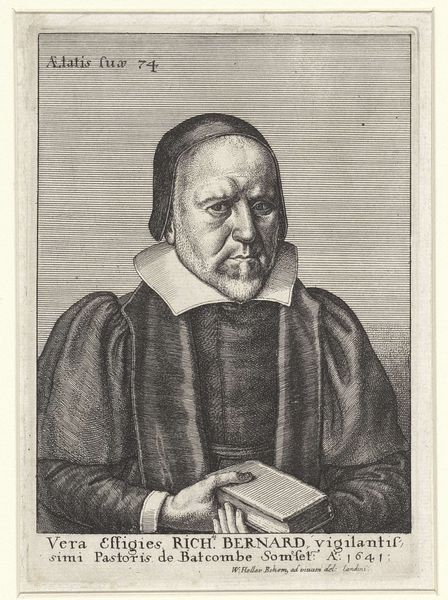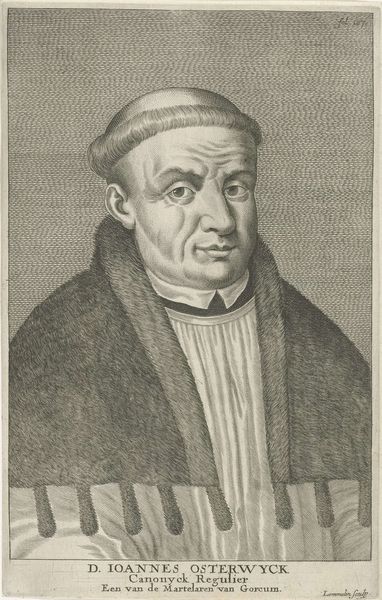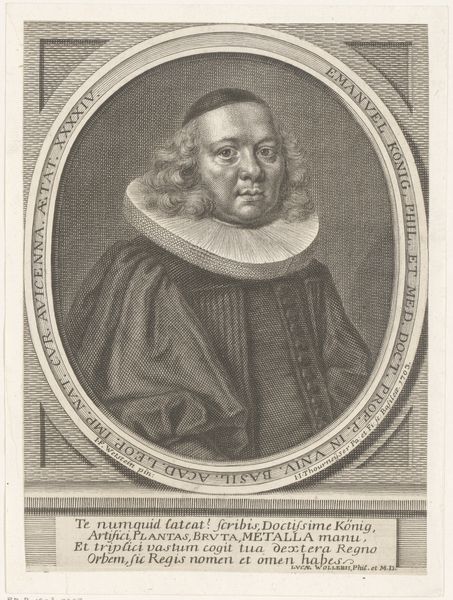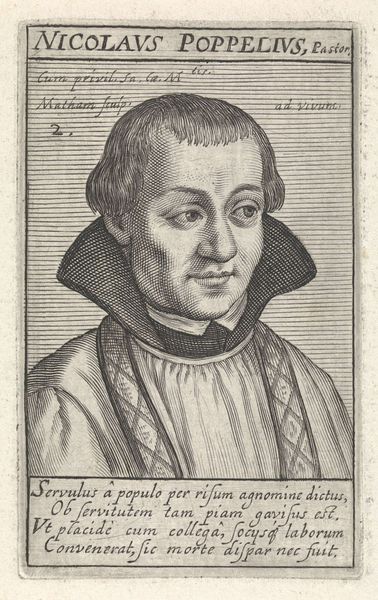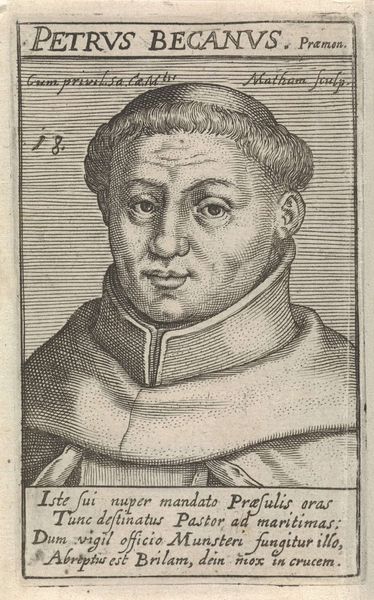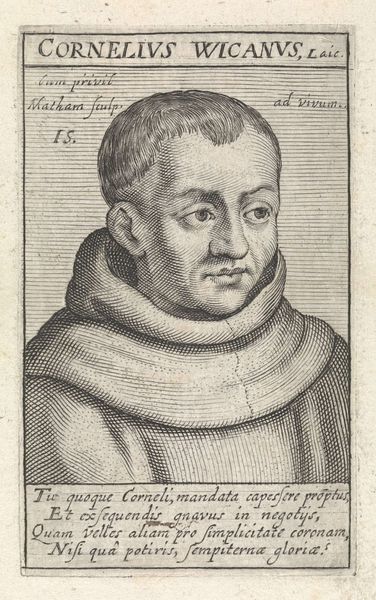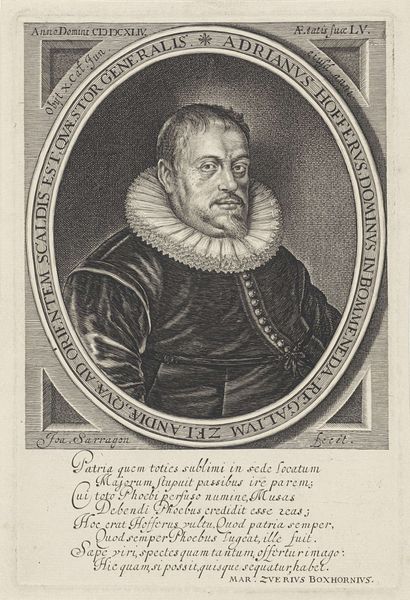
engraving
#
portrait
#
baroque
#
northern-renaissance
#
engraving
Dimensions: height 99 mm, width 60 mm
Copyright: Rijks Museum: Open Domain
Curator: Here we have Jacob Matham's "Portrait of H. Leonard Vechel," dating back to 1617-1618, currently housed in the Rijksmuseum. It's an engraving, so we’re dealing with a very specific kind of reproductive printmaking here. Editor: It has an impressive and dignified gravity; there's a solidity to him that the black and white etching somehow amplifies. The gaze is steady. Curator: The materials of the engraving themselves—the metal plate, the acid, the paper—were tools of democratization. Matham made a career of making images accessible to a wider public. Think about it: one person's likeness replicated potentially hundreds, even thousands of times, circulating within the culture. Editor: Precisely. Prints like these were vital for propagating images of important figures. It's not just an individual likeness, it's contributing to his public image, to the persona he embodies for his followers, congregants. It solidified Vechel’s authority. And consider how that circulated within a religious and political context of the time. Curator: Definitely. And look at the texture that Matham achieves with the engraving; it almost mimics the fabrics of Vechel’s garments, especially the elaborate pattern in his vestments. This hints at the wealth and prestige attached to his position. What's being worn becomes just as much of a visual signal as the face. Editor: You know, seeing his vestments so carefully depicted does make me wonder about the intended audience and how they might read this. The very deliberate choices in presentation—everything down to the Latin inscription beneath the portrait, signaling education and sophistication. Curator: Agreed, every element contributed to a carefully constructed message. Considering the cultural role engravings played at that time truly reveals how art can become a tool for influence. Editor: This was not just an image; it's a statement. An assertion of presence and power within the society of the time. The intersection of individual and the institution, solidified in ink. Curator: Examining how the work was materially produced changes the way we value the final print and the image itself, especially how the accessibility of prints influences public perceptions of authority figures such as Vechel. Editor: Absolutely. Considering its social role enhances its artistic importance today, shedding new light on societal hierarchies.
Comments
No comments
Be the first to comment and join the conversation on the ultimate creative platform.
